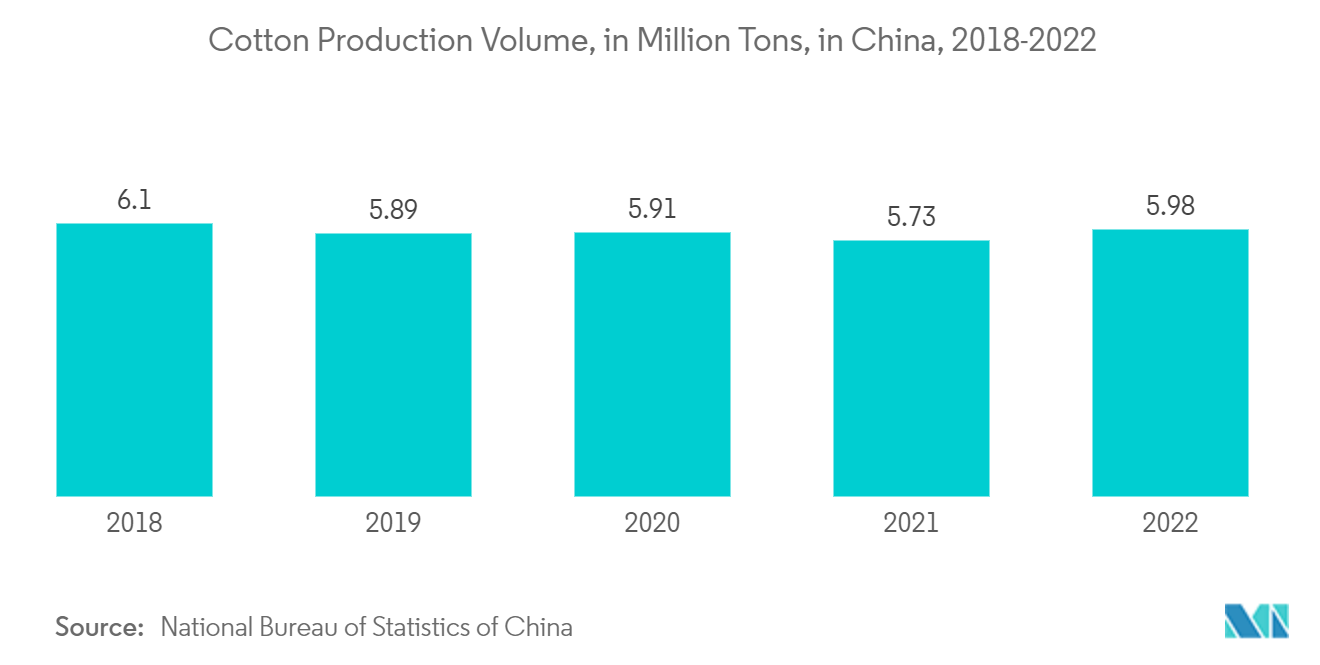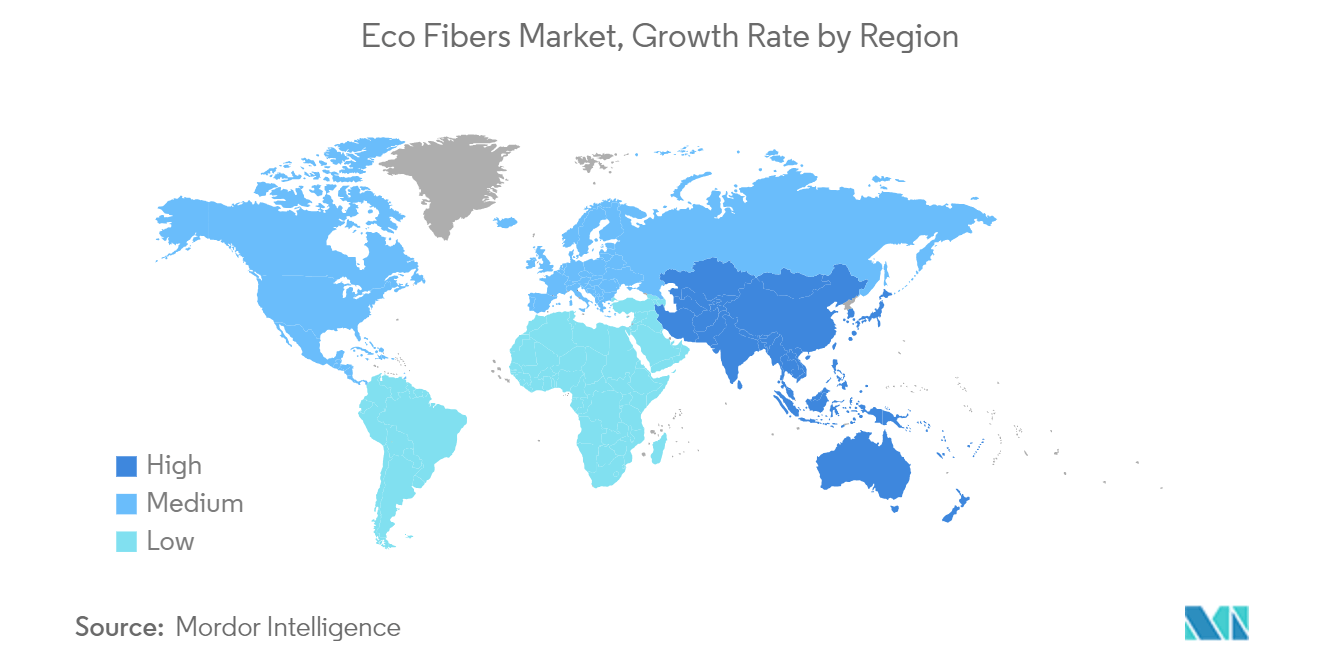Market Trends of Eco Fibers Industry
Growing Demand from Textile Industry
- Eco-fibers are environmentally friendly and have been increasingly used in textile fabrics because of the growing global focus on improved sustainability.
- Eco-fibers are usually made of different substances, such as hemp, flax, organic cotton, and bamboo, which are used in the production of fabrics. Products, such as organic cotton, are gaining traction and serve as a sustainable alternative to conventional cotton in the global market.
- Organic cotton production initially started in Turkey, and the organic cotton industry currently occupies the place of the backbone of the textile industry of many developing countries. The sector has also played an important role in boosting the economies of a few developing countries.
- According to the International Journal of Novel Research and Development, cotton production in India is projected to reach 7.2 million tons (43 million bales of 170 kg each) by 2030, driven by increasing consumer demand. Additionally, the National Bureau of Statistics of China stated that China produced nearly 5.98 million tonnes of cotton in 2022, up 4.3% yearly.
- Bamboo fiber works naturally as an anti-bacterial material and has properties of bacteriostatic and deodorant. Additionally, bamboo fibers offer permeability, a soft feel, and easy straightening and have excellent dye and pigmentation color effect properties to fabrics.
- Increasing demand for comfort in daily wear, technological advancements in fashion fabrics, and government regulations on textile chemicals in developed regions are driving the demand for innovations in the textile industry, which, in turn, is expected to drive the market for eco fibers through the years to come.
- According to the Confederation of Indian Industry (CII), India is the world’s second-largest producer of textiles and garments and has a 4% share of the global trade in textiles and apparel. Furthermore, the textiles and apparel industry contributes 2.3% to India's GDP, 13% to industrial production, and 12% to exports.
- Furthermore, the United States' textile and apparel shipments totaled USD 65.8 billion in 2022. The country is the third largest exporter of textile-related products in the world. Fiber, textile, and apparel exports were USD 34.0 billion in 2021.
- Thus, all such factors are expected to drive the eco fibers market during the forecast period.

Asia-Pacific to Dominate the Market
- Asia-Pacific is expected to dominate the global market, largely driven by the highly developed textile industry in China and India. Moreover, manufacturers prefer to set up manufacturing units in countries like China, India, Bangladesh, and Pakistan, owing to high cotton production and availability of cheap labor.
- Growing environmental issues because of various chemicals used in textiles and a large proportion of the population getting affected by various diseases are increasing the demand for eco fibers in different applications. Eco fibers are human-friendly and cause no damage to the environment, even during the production phase.
- Eco-fibers have also been used for household applications, such as tarpaulins, geotextiles, bags, carpets, and furniture materials. China majorly exports its household materials to other countries and regions, like India, Pakistan, Europe, etc.
- Furthermore, as per Invest India's analysis, India is set to achieve USD 250 billion in textiles production and USD 100 billion in exports by 2030.
- Packaging is another sector where the demand for eco-friendly fibers is recently gaining momentum due to the increasing demand for sustainable packaging. According to Protega Global Ltd., in January 2023, the percentage of consumers demanding sustainable packaging was risen to 81%.
- Packaging is considered the fifth largest sector in the Indian economy and is growing around 22-25% per annum, according to the Packing Industry Association of India (PIAI).
- Additionally, according to World Trade Organization (WTO) data, China leads the global eco-fiber textile market.
- Overall, such factors are expected to drive market growth during the forecast period.


